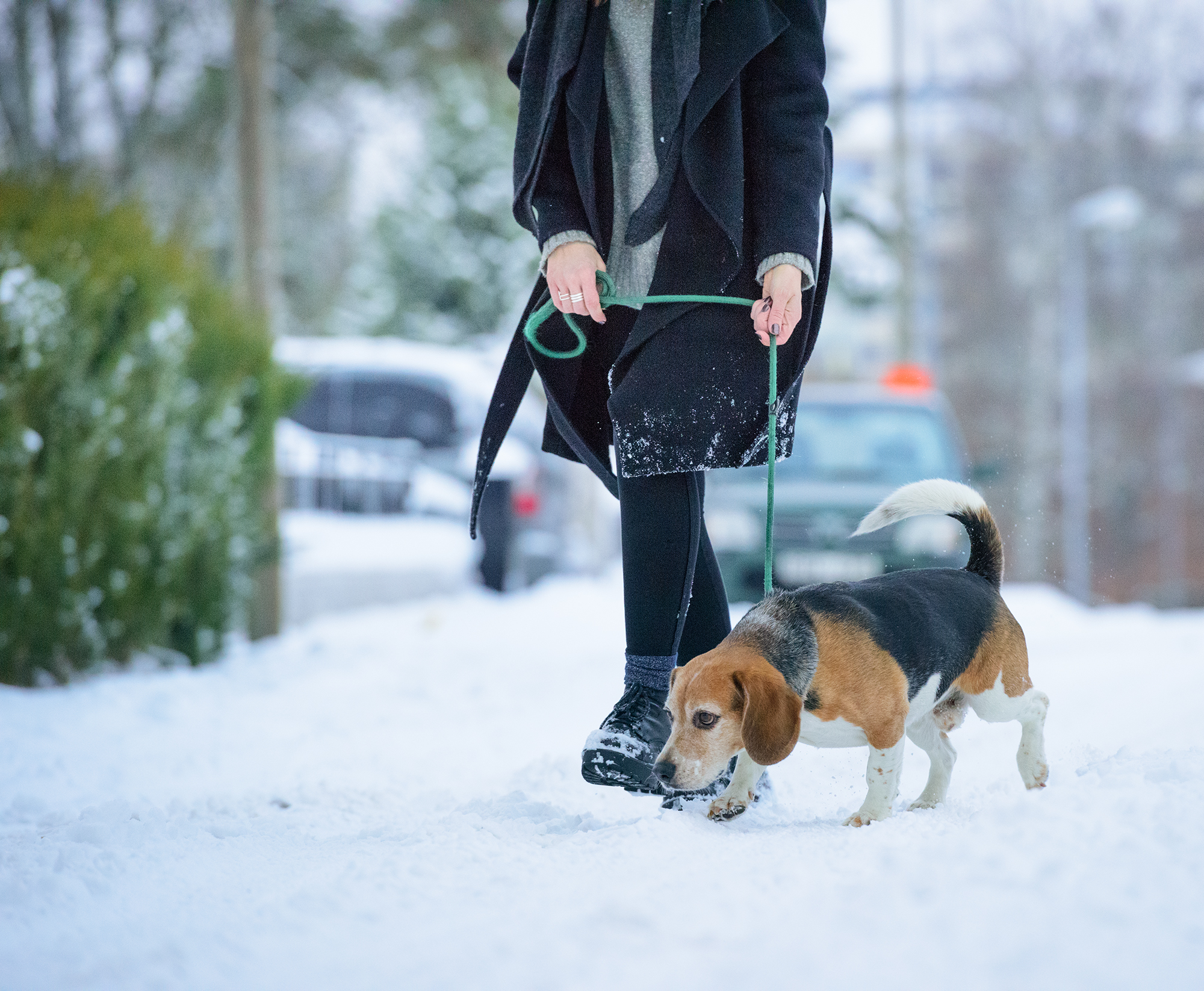
Why Cold Weather Makes Your Dog's Arthritis Worse
As dogs age, many succumb to the painful effects of arthritis. This disease of the joints is most often caused by natural wear and tear, leading to the degeneration of the cartilage that cushions the bones. As arthritis progresses, your dog may begin to experience worsened pain and severe immobility.
When winter comes around, your dog’s arthritis may be acting up worse than ever. Much like in humans, dogs’ joints can be affected by cold winter weather for a few potential reasons. Once the temperatures start to drop, it’s important to be mindful of your pup’s mobility and comfort and potentially begin additional treatment methods, so your dog can move freely and easily all winter long.
Canine arthritis in winter
Most people with arthritis are familiar with the phenomenon of stiffer joints and increased pain once fall turns into winter. What many don’t realize is that the same thing can happen to our pets who suffer from the same disease.
Experts aren’t completely certain what causes increased joint pain during periods of cold weather, but there are a few potential reasons behind it. First, when the weather turns colder, air pressure tends to drop. This can lead to the tissues beginning to swell, which inhibits mobility and makes moving more painful.

Another reason is that cold temperatures can cause the muscles surrounding the joints to stiffen. In animals not suffering from arthritis, this can be somewhat uncomfortable, but for dogs with existing joint pain, the result could be much more difficult to manage.
Finally, cold winter weather leads pet parents to stay inside more often, shortening daily walks and trips to the park. Arthritic dogs need to move to warm up and stretch their muscles, as this typically reduces stiffness and pain in the joints. If your pup is less active during the winter months, their joints may become even stiffer than usual, causing greater pain and more difficulty moving around the home.
How to help your pup
If you notice your arthritic pup struggling more than usual during the winter months—especially right after they wake up in the morning—you’ll want to create a winter-specific treatment plan to help your dog cope with the cold. Here are some of the best things you can do to improve your dog’s mobility and decrease their pain:

- Get moving: One of the most important things for your dog to do when they are experiencing an arthritis flare-up is to exercise. Although they may not want to or might feel stiff at first, getting up and moving will warm up and strengthen your dog’s muscles and reduce stiffness in the joints. Aim to go on a walk at least once—if not twice—a day, in spite of the cold temperature. If the weather is too harsh to be outside, get your dog up to play and encourage them to move around the house. If you have a pet-friendly exercise center nearby, try taking your dog for a swim or a few laps around a track, as well.
- Heating pads or blankets: Since the cold temperatures might be making it hard for your pooch to move, especially overnight, try to warm them up by providing a pet-safe heated blanket or heating pad for them to sleep on. The little extra warmth may encourage your dog to get up and moving first thing in the morning! Placing your pet’s bed closer to the fireplace or in another toasty area of the home may also help.
- Joint supplements: If your dog isn’t already taking supplements to improve joint health, the winter might be the perfect time to start. Many joint supplements are designed to improve mobility and support joint tissue, which can reduce pain. If your pup is taking supplements for joint health, consider reevaluating them or adding another supplement into their daily routine. Look for supplements that contain ingredients like glucosamine or MSM, both of which are well-known for supporting and repairing joint tissues and may provide an added level of comfort.
- Reduce inflammation: In addition to joint supplements, arthritic dogs may benefit from supplements designed to reduce inflammation. Since much of winter-related arthritis pain comes from the swelling and stiffness of the joints, reducing inflammation in these areas using natural supplements like omega-3 fatty acids may make your pup more comfortable. (And, omega-3 fatty acids have many other benefits for your dog that are added side effects!)
- Massage: Gently massaging your dog’s problem areas—like their knees or hips—may help loosen stiff muscles and make it easier for them to move. Seek out a pet massage professional in your area or do some research on how to properly administer gentle massages at home, so you can give your pet a little extra love when they’re in pain.
Winter can be tough on our pets, so it’s important to watch for changes in your dog’s movement and behavior to know when it’s time to ramp up their arthritis treatment or visit the vet. By revamping your dog’s treatment methods, you’ll be able to make them much more comfortable until spring!


